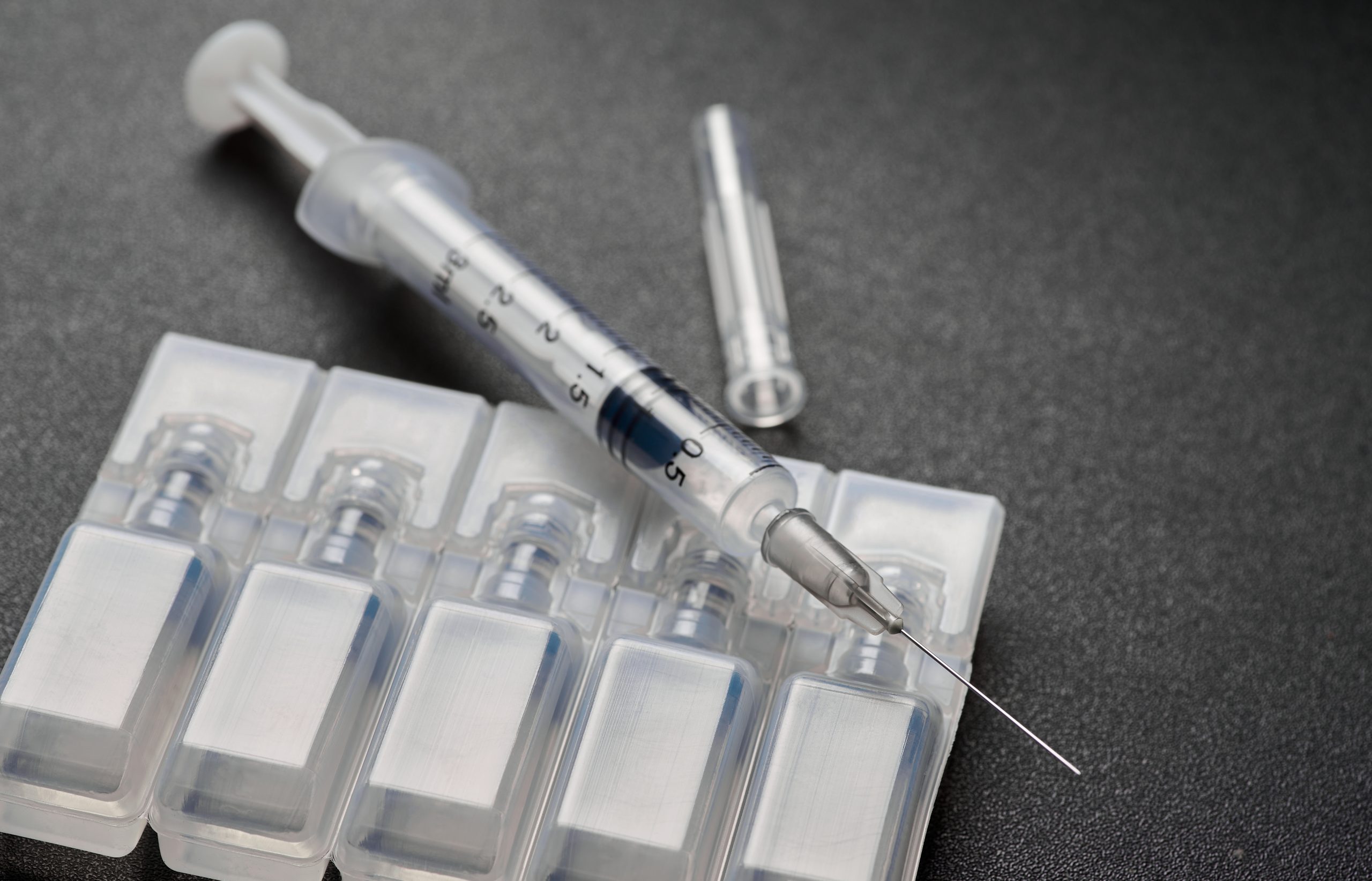According to a study by Neustadt (2003), 72% of patients who received Hyalgan’s five-injection therapy experienced a significant improvement of over 50% in knee osteoarthritis (OA) pain, lasting for a year or more. This research underscores the long-term efficacy of Hyalgan in treating knee OA pain during rest, nighttime, and walking.
Knee osteoarthritis (OA) has impacted older individuals globally, disrupting their active lifestyles due to joint pain, swelling, and stiffness. For individuals with early to moderate knee OA conditions, Hyalgan demonstrates both safety and efficacy in alleviating these symptoms and enhancing patients’ overall quality of life.
In this article, we will discuss Hyalgan knee injections, strategies for managing discomfort during treatment, and what patients can expect after the therapy.
Key Takeaways
- Hyalgan knee injections can treat knee osteoarthritis (OA) pain and are typically given when first-line treatments and simple analgesics have not been effective.
- Several factors, such as needle size, injection technique, patient’s anxiety, and fear of pain, can contribute to pain and discomfort during Hyalgan injections.
- Medical professionals can incorporate combination techniques to minimize pain and discomfort, such as topical anesthesia, distraction techniques, and patient education and communication.
- Medical professionals can help inform patients about the treatment’s benefits, risks, and any discomfort that may arise during the procedure.
- Healthcare providers should also discuss potential side effects after the therapy, in addition to minor pain or discomfort.
- Personalized treatment plans allow medical professionals to discuss the Hyalgan knee injection therapy, its benefits and risks, and the process with the patients.
- Effective communication is critical in a Hyalgan knee injection process, which includes explaining the procedure, all factors, and what to expect.
Factors Contributing to Pain and Discomfort During Hyalgan Injections

Hyalgan is a solution containing sodium hyaluronate, similar to the substance in the synovial fluid that surrounds the joints in the body. Hyaluronic acid mainly comprises the synovial fluid, which acts as the lubricant and shock absorber for the joints.
Hyalgan knee injections can treat knee osteoarthritis (OA) pain and are typically given when first-line treatments and simple analgesics have not been effective. Several factors can contribute to pain and discomfort during Hyalgan injections.
- Needle Size: According to the Hyalgan prescribing information, medical professionals should administer a Hyalgan knee injection using a 20-gauge needle. They may use a 1.5 to 2-inch needle size for injection.
- Injection Technique: Medical professionals must strictly follow an aseptic administration technique for Hyalgan injections.
- Patient Anxiety and Fear of Pain: These factors can worsen patients’ discomfort during the procedure. Healthcare providers must reassure patients and employ strategies such as deep breathing techniques.
Strategies for Minimizing Pain and Discomfort During Hyalgan Injections
After Hyalgan knee injections, resting the knee or applying ice briefly after the injection treatment may help reduce pain and swelling. Moreover, medical professionals can use combination techniques to minimize pain and discomfort.
- Topical Anesthesia: Healthcare providers may use topical anesthesia to numb the injection site and reduce procedural pain and distress. It’s applied before the injection and can significantly reduce the sensation of the needle entering the skin. This can particularly benefit individuals afraid of needles and treatment pain.
- Distraction Techniques for Patient Comfort: Distraction techniques can help refocus the patient’s attention away from the pain sensation. These can include listening, reading, or focusing on another person. These techniques can also be effective for individuals undergoing the injection treatment.
- Importance of Patient Education and Communication: Medical professionals must educate patients about the procedure and what they can expect to reduce their anxiety and fear. Clear communication about Hyalgan knee injections’ benefits and risks, how it’s administered, and potential side effects can be crucial in managing patients’ discomfort during injections.
Managing Patient Expectations for Hyalgan Injections

It’s crucial to manage expectations by explaining that Hyalgan knee injections may relieve knee osteoarthritis (OA) pain and improve joint mobility and function. While results may vary, some patients may experience benefits after three injections, and others may require a five-injection course.
Patients should seek a medical professional to administer and supervise the Hyalgan knee injections. The professional can help inform patients about the treatment’s benefits, risks, and any discomfort that may arise during the procedure.
Aside from minor pain or discomfort, healthcare providers should also discuss the potential side effects after the therapy. Common side effects of Hyalgan knee injection may include warmth, redness, stiffness, or pain at the injection site. Hyalgan reported common adverse effects, and individuals must report to their doctors once these symptoms occur.
- Injection-site pain
- Gastrointestinal complaints
- Headache
- Bruising and Rash
- Local joint pain and swelling
- Itching
Empathetic communication involves acknowledging the patient’s concerns and questions, providing clear and comprehensive information about the procedure, and offering reassurance. Topical anesthesia, applying ice post-treatment, and suggesting rest to minimize pain and swelling can enhance comfort.
Enhancing Patient Satisfaction and Compliance with Hyalgan Injections

Individualizing treatment plans can enhance patient satisfaction and compliance with the appropriate procedure. Personalized treatment plans allow medical professionals to discuss the Hyalgan knee injection therapy, its benefits and risks, and the process with the patients.
Moreover, healthcare providers can also align Hyalgan’s optimal benefits to the patient’s needs, goals, osteoarthritis (OA) condition, and overall health. This can help ensure a safe and effective Hyalgan treatment for knee OA patients. Regular follow-ups can help monitor patient progress and address concerns immediately.
Medical professionals may use combined treatment strategies to treat knee OA pain to achieve optimal clinical outcomes. After Hyalgan knee injections, strategies may include medication-based therapies, home exercises, or physical therapy. These experts must tailor the treatment plan to the patient’s needs, and a thorough assessment from a medical professional can help with that.
Patient-centered care is crucial in post-injection treatment. It involves understanding the patient’s lifestyle, personal goals, and preferences. An individualized approach allows shared decision-making about management, leading to a partnership for better healthcare.
Effective communication is critical in a Hyalgan knee injection process, which includes explaining the procedure, all factors, and what to expect. This can help reduce anxiety, improve patient satisfaction, and ultimately lead to optimal health outcomes.
Conclusion
Hyalgan injections can treat knee pain caused by osteoarthritis (OA). Pain and discomfort may occur during the procedure; healthcare providers should discuss these factors with the patients. Strategies such as topical anesthesia and distraction techniques can minimize this discomfort. Moreover, combining therapies like exercise after Hyalgan injections or physical therapy can help them achieve optimal outcomes.
Managing patient expectations is also crucial, and informing patients about the benefits and risks of Hyagan knee injections can aid them in making healthcare decisions. Clear communication and patient-centered care can enhance patient satisfaction and compliance, leading to better healthcare results.
References
- Neustadt. (2003). Long-term efficacy and safety of intra-articular sodium hyaluronate (HYALGAN®) in patients with osteoarthritis of the knee. Hyalgan for Healthcare Professionals. https://hcp.hyalgan.com/hcp/clinical-studies/
- 5-Injection Efficacy – Hyalgan. (n.d.). Hyalgan. Retrieved April 15, 2024, from https://www.hyalgan.com/hcp/efficacy-and-safety/5-injection-efficacy/
About: Medica Depot is your trusted all-in-one supplier, offering a range of high-quality medical injectables and supplies. If you’re looking to buy Hyalgan online, you can do so on Medica Depot quickly and easily. We offer a worry-free experience in searching for the best and most popular products on the market. Whether for health professionals, plastic surgeons, dermatologists, licensed estheticians, or other specialists, we can offer genuine, brand-name products you may need. With Medica Depot, we prioritize serving you better to improve the patient’s quality of life.









